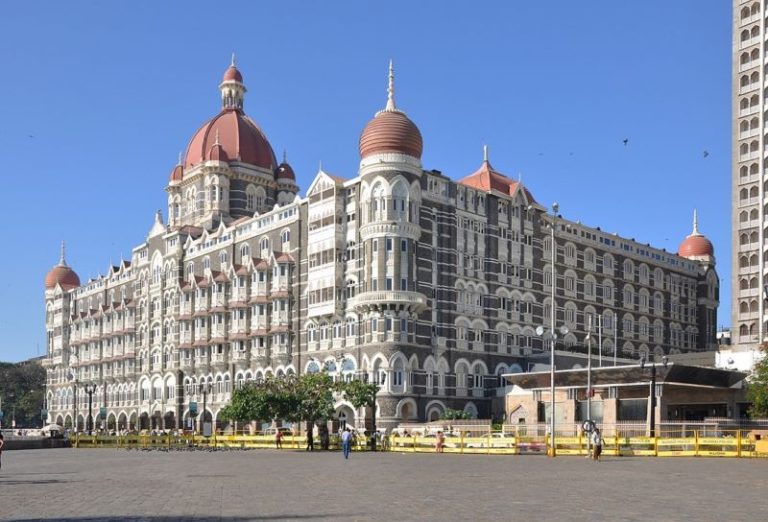As the Indian hospitality sector prepares to welcome 2025, it stands at the cusp of remarkable growth, driven by rising domestic travel and an anticipated resurgence in foreign tourist arrivals. Industry experts predict that international arrivals will surpass pre-COVID levels next year, while the sector continues to make a significant contribution to the nation’s economy, underscoring its role in making “India inevitable.”
With a target of contributing USD 1 trillion to India’s economy by 2047, the hospitality industry is also seeking key government interventions. Unified licensing, workforce upskilling, and targeted infrastructure investments are among the critical enablers required to meet the burgeoning demand, particularly as India gears up to become the world’s third-largest economy.
A Pivotal Role in Economic Growth
“India aims to become the third-largest economy by 2047, and the hospitality sector is set to play a pivotal role in achieving this goal. The sector’s multiplier effect on the economy surpasses that of manufacturing and agriculture,” says KB Kachru, President of the Hotel Association of India (HAI).
Kachru, who is also Chairman of South Asia at Radisson Hotel Group, believes the industry’s future looks bright, pointing to higher occupancies and rising average room rates. Citing a report by IBEF, he adds, “India’s travel market is projected to grow from an estimated USD 75 billion to USD 125 billion by FY27. Additionally, international tourist arrivals are expected to reach 30.5 million by 2028.”
While domestic travel has surged in the past two years, inbound tourism has lagged. However, Kachru is optimistic: “Inbound tourism is showing steady recovery and is likely to reach pre-COVID levels early next year.”
Demand Drivers and Industry Outlook
Puneet Chhatwal, MD and CEO of Indian Hotels Company Ltd (IHCL), echoes this sentiment. “India will continue to be among the fastest-growing major economies. With limited supply addition in the country’s top ten lodging markets, foreign tourist arrivals exceeding pre-COVID levels, and travel becoming a non-discretionary spend, demand buoyancy in the hospitality sector will persist,” he notes.
Pradeep Shetty, Vice-President of the Federation of Hotel and Restaurant Associations of India (FHRAI), projects a strong outlook for 2025. “Domestic tourism is expected to grow by 15-20%, driven by initiatives like ‘Dekho Apna Desh’ and infrastructural improvements under the Swadesh Darshan 2.0 scheme,” he says.
Shetty anticipates that international arrivals will surpass 17 million in 2025, generating over USD 36 billion in foreign exchange earnings. “Hotel occupancy rates are expected to rise to 75% or higher, with MICE (Meetings, Incentives, Conferences, and Exhibitions) contributing significantly as India hosts multiple high-profile global events,” he adds.
The hospitality sector’s growth trajectory remains strong, with Arjun Baljee, President of Royal Orchid Hotels, emphasizing the importance of digital innovation, personalized experiences, and eco-conscious travel. “We look forward to a promising 2025, creating memorable experiences for travelers and contributing to India’s tourism growth,” he says.
Challenges and Policy Support
Despite its growth potential, the hospitality industry continues to face hurdles, particularly in gaining recognition as a key driver of economic growth. “Despite the emphasis on infrastructure development in recent budgets, the hospitality industry has yet to receive recognition for its critical role and immense potential,” laments Kachru.
HAI has reiterated its demand for classifying hotels as infrastructure to unlock favorable financing terms. “This designation would enable access to lower interest rates and extended repayment periods, thereby attracting and boosting investment,” Kachru says.
Shetty adds that uniform recognition of the hospitality sector across states would bring tangible benefits, such as lower electricity tariffs, easier land-use permissions, and better access to finance.
Building a Resilient Future
Reflecting on 2024, Baljee describes it as a year of resilience, driven by surging domestic travel, a focus on experiential stays, and sustainability. Kachru highlights the government’s investments in transportation infrastructure, including airports, high-speed rail networks, and highways, which have enhanced connectivity and fueled hotel growth.
A spokesperson from Chalet Hotels notes that the industry has shown resilience, with record-high occupancy rates and substantial increases in average daily rates (ADRs). “This underscores the industry’s ability to meet the rising demand for quality experiences among travelers,” the spokesperson says.
Looking Ahead
Summing up the year, Shetty remarks, “2024 has been a milestone year for India’s hospitality and tourism sectors, collectively valued at over USD 24 billion.” With 2025 on the horizon, the sector remains poised for sustained growth, underpinned by robust domestic travel, a rebound in foreign tourism, and supportive government policies.
The hospitality industry stands ready to play its part in India’s economic journey, contributing to a sustainable and inclusive future while cementing its place as a key pillar of the nation’s growth story.
Source: PTI


